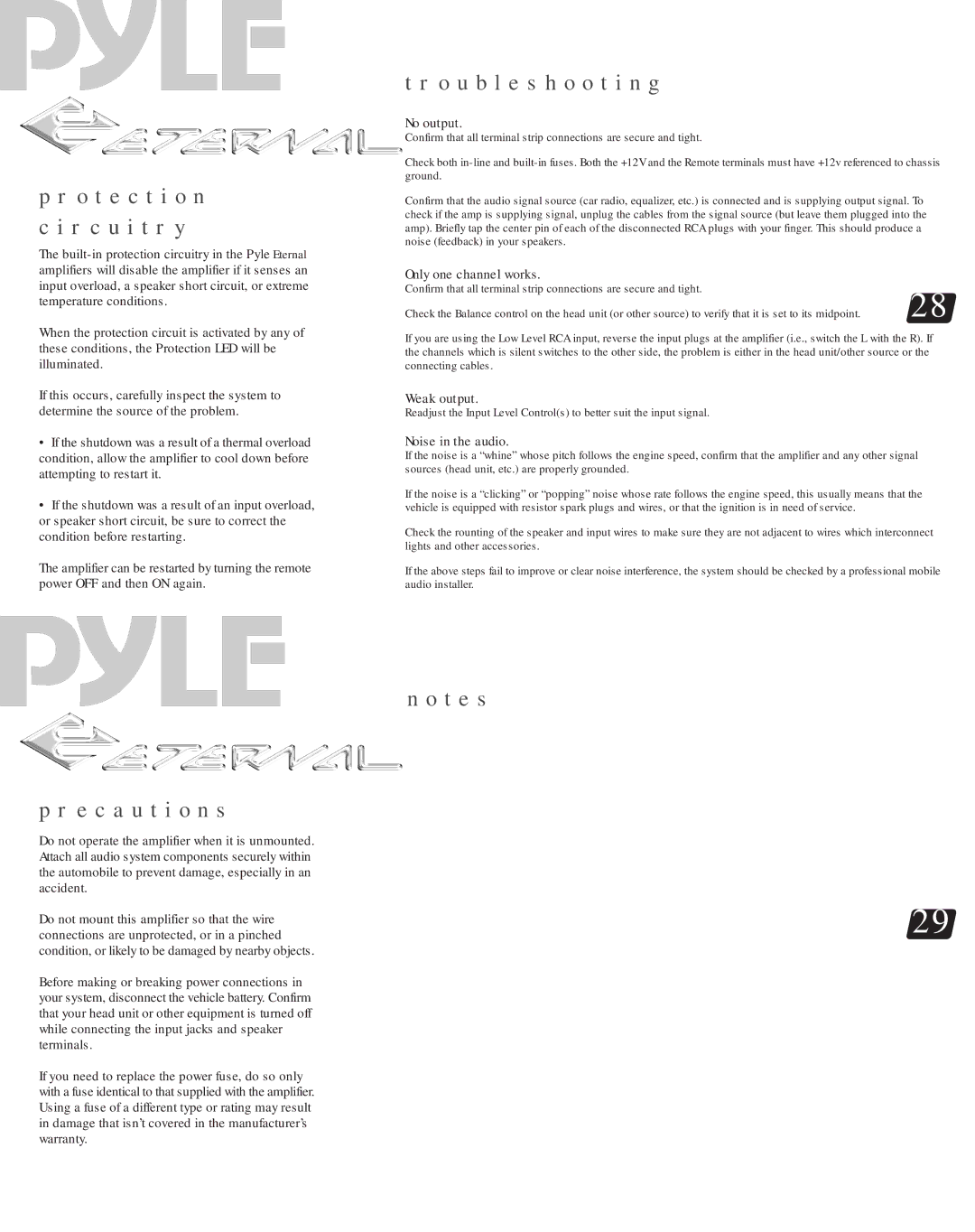
p r o t e c t i o n c i r c u i t r y
The
When the protection circuit is activated by any of these conditions, the Protection LED will be illuminated.
If this occurs, carefully inspect the system to determine the source of the problem.
•If the shutdown was a result of a thermal overload condition, allow the amplifier to cool down before attempting to restart it.
•If the shutdown was a result of an input overload, or speaker short circuit, be sure to correct the condition before restarting.
The amplifier can be restarted by turning the remote power OFF and then ON again.
t r o u b l e s h o o t i n g
No output.
Confirm that all terminal strip connections are secure and tight.
Check both
Confirm that the audio signal source (car radio, equalizer, etc.) is connected and is supplying output signal. To check if the amp is supplying signal, unplug the cables from the signal source (but leave them plugged into the amp). Briefly tap the center pin of each of the disconnected RCA plugs with your finger. This should produce a noise (feedback) in your speakers.
Only one channel works. |
|
Confirm that all terminal strip connections are secure and tight. | 28 |
Check the Balance control on the head unit (or other source) to verify that it is set to its midpoint. |
If you are using the Low Level RCA input, reverse the input plugs at the amplifier (i.e., switch the L with the R). If the channels which is silent switches to the other side, the problem is either in the head unit/other source or the connecting cables.
Weak output.
Readjust the Input Level Control(s) to better suit the input signal.
Noise in the audio.
If the noise is a “whine” whose pitch follows the engine speed, confirm that the amplifier and any other signal sources (head unit, etc.) are properly grounded.
If the noise is a “clicking” or “popping” noise whose rate follows the engine speed, this usually means that the vehicle is equipped with resistor spark plugs and wires, or that the ignition is in need of service.
Check the rounting of the speaker and input wires to make sure they are not adjacent to wires which interconnect lights and other accessories.
If the above steps fail to improve or clear noise interference, the system should be checked by a professional mobile audio installer.
p r e c a u t i o n s
Do not operate the amplifier when it is unmounted. Attach all audio system components securely within the automobile to prevent damage, especially in an accident.
Do not mount this amplifier so that the wire connections are unprotected, or in a pinched condition, or likely to be damaged by nearby objects.
Before making or breaking power connections in your system, disconnect the vehicle battery. Confirm that your head unit or other equipment is turned off while connecting the input jacks and speaker terminals.
If you need to replace the power fuse, do so only with a fuse identical to that supplied with the amplifier. Using a fuse of a different type or rating may result in damage that isn’t covered in the manufacturer’s warranty.
n o t e s
29
